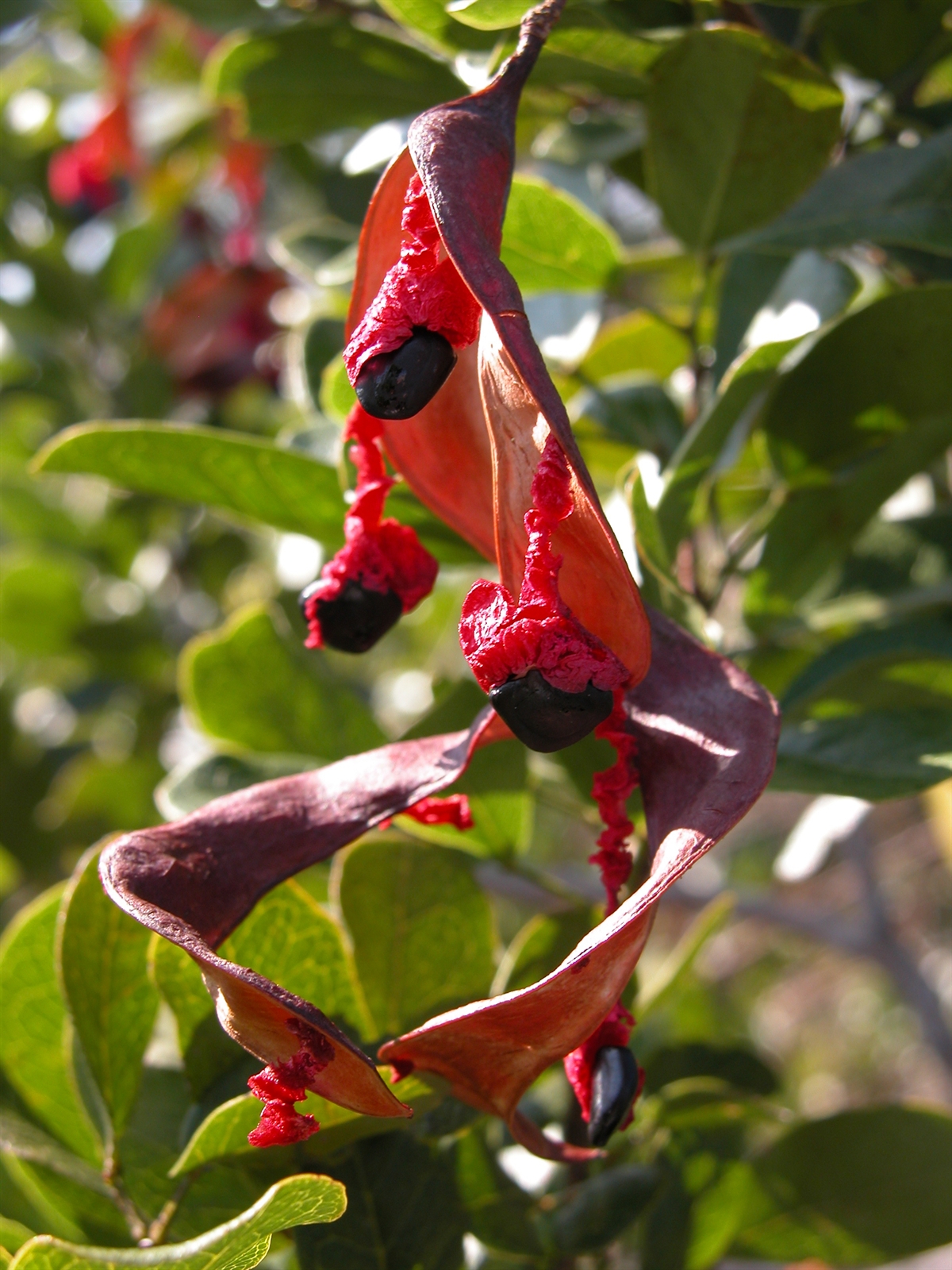Habit: Pithecellobium keyense grows as shrub to small tree up to seven meters in height. Typically the trunk is narrow (less than 15 cm) and multi-branched. The trunk can be rough with shallow fissures. The leaves are arranged alternately and are twice pinnately compound with 2-4 leaflets per pinna. The leaflets are sessile. Young branches may occasionally have prickles.
The complete, perfect, actinomorphic flowers are in heads arranged in panicles. The heads are 2-3 cm wide and range from white to pink to reddish in color. The calyx has 5 fused sepals. The corolla has 5 fused petals. The calyx and corolla are fused into a single structure. There are numerous stamens that are much longer than the perianth and provide the coloring of the heads. The fruit is a legume that becomes coiled (hence Rams Horn) as it matures. The seeds are black with a bright red aril.
Habitat: Pithecellobium keyense grows in sand and limestone substrate Dry Broadleaf Evergreen Formations (coppice), Pine Woodlands as well as Human Altered environments (roadsides, yards).
Distribution: Pithecellobium keyense occurs on all island groups in the Lucayan Archipelago as well as south Florida, Cuba and Mexico (Yucatan Peninsula). It is a common species through out its range.
Medicinal/Cultural/Economic usage: Pithecellobium keyense is not known to be used medicinally in the Lucayan Archipelago.
The red arils are edible. It has become part of the horticultural trade because of its beautiful flowers and distinctive coiled fruits.



